Alicia Silverstone's Blog
October 3, 2025
The Joke’s On Cancer
I was so excited for 2025. I never make insipid resolutions, mostly because I usually derail by mid-February. This time, though, I was resolute: meditate, eat healthy, exercise more, read more, do more, and shift into fifth gear in my career. As a stand-up comedian, I’ve always used humor to navigate life’s obstacle course—but nothing prepared me for the unforeseeable detour up ahead.
The new year started with a boom-erang. I spent New Year’s Eve in the hospital with my husband, who had just undergone a knee replacement. Not exactly the kind of New Year I’m accustomed to. Normally, I work every New Year’s Eve, which gives me the illusion that I’m manifesting abundance for the upcoming year. So, this clinical rerouting was upsetting. But I wanted to be there for my husband, who was feeling very dismayed. Plus, he looked sexy in his gender-neutral hospital gown.
 Irene Bremis and her husband | Courtesy
Irene Bremis and her husband | CourtesyUnwilling to let anything upend my goals, on January 1st I woke up and started listening to motivational meditations on Reloop. I was on fire for over two weeks—record scratch—until January 17th, when life pissed on my parade and I couldn’t see through the smoke.
For six months, I’d been experiencing frequent bowel movements with occasional blood. I convinced myself it was IBS and hemorrhoids—because the show must go on, sweeties! But eventually, the blood became consistent. I tried Cologuard twice. The first box was expired, the second was invalid for “insufficient specimen.” (No comment.) So, I gave up on Cologuard and walked over to CVS, where I picked up a Second Generation FIT kit for $8. I went home, locked myself in the bathroom, and after the appointed time, looked down to see it had tested positive for cancer.
I assumed it was just detecting blood, but it lit a fire under my ass to make an emergency appointment for a colonoscopy. I was over 50 and had never had one before. I thought it was futile—colon cancer doesn’t run in my family—but old age does. Plus, I’ve always had a visceral fear of anesthesia, especially since menopause brain had me forgetting the make and model of my own car. I even got tested for early-onset dementia, just to be sure.
On January 17th, I walked into the doctor’s office. The nurse assured me that 98 percent of the time, a FIT test leads to nothing. Eager to drink the Kool-Aid, I followed them to the gurney. I was mid-sentence, asking the nurse to use a very light dose of… and I was out.
The next thing I remember was waking up alone, farting like I’d never farted before. It took a while for anyone to come into the room, but eventually, my husband did. Within one minute, the doctor pulled him out. They were gone for what felt like fifteen dog minutes. When they returned, my husband looked like someone had broken into our safe, and the doctor had the discomforting look of a funeral director. He gently said, “We found something. It’s a mass.”
Five centimeters, he said, forming a circle with his fingers. He explained they’d send it to the lab for biopsy and they’d call me with the pathology report.
Three days later, the phone rang. My husband answered. His constipated poker face told me everything—I had cancer.
 Irene Bremis and podcast co-host, Rachel Dratch | Courtesy
Irene Bremis and podcast co-host, Rachel Dratch | CourtesyHearing “you have cancer” is surreal. The words echo loudly, but somehow you go deaf. My husband and I stayed in “sick bay,” sob-spooning. I speculated how much time I had left, pondered all the unchecked things on my to-do list, and kept thinking: I don’t have time for cancer. I’M BUSY.
After a week of inertia, I picked myself up and googled colon cancer survivors without chemo. The book Chris Beats Cancer popped up. Chris had colon cancer, underwent surgery, but skipped chemotherapy against his doctor’s urgency. The more I read, the more I knew chemo wasn’t for me. Chemo terrified me more than cancer did.
The gastroenterologist referred me to a surgeon. He explained the tumor was large and in a precarious spot. He recommended three months of chemo, followed by surgery. That was the beginning of a series of dehumanizing procedures that left me sympathizing with anyone who’s ever claimed alien abduction.
Then, as if the universe wanted to mock me, my sister texted to say our mother was being rushed to the hospital with a bowel obstruction. My surgeon overheard and blurted, “That’s colon cancer.” Sure enough, it was. Same size tumor, same surgery. She underwent genetic testing that showed it wasn’t hereditary—just a cruel coincidence. I thought who’s holding the voodoo doll? Was this stigmatic or a cruel coincidence?
Meanwhile, my surgeon said a stoma was unavoidable if he operated. A scat fanny pack? I wasn’t prepared. He pushed chemo. My mind was already fixed.
I plunged into research. Books, medical journals, survivor blogs, YouTube testimonies. Knowledge wasn’t just power—it was life. I changed my diet: raw cruciferous veggies, sprouts, juicing, Ezekiel bread, legumes, brown rice, fasting. EVERYTHING organic. I gave up red wine when I needed it most. I started a regimen of dandelion root, turkey tail, reishi, amla, curcumin, omega-3s. I tracked biomarkers—CEA, hsCRP, ctDNA.
I found community: a 96-year-old nutritionist, an astrophysicist with a breakthrough supplement, friends who became “cancer sponsors,” and my church, where I hijacked the prayer group. I meditated, cut stress, and kept podcasting with Rachel Dratch. I kept my diagnosis private, not out of shame but out of sheer self-preservation.
 Visiting the oncologist | Courtesy Irene Bremis
Visiting the oncologist | Courtesy Irene BremisWithin a week of research, I was 95 percent sure I’d forgo chemo.
My first oncologist only cemented that choice. She pushed FOLFOX, a regimen from the ’90s. She told me I’d need a port—a small device under the skin for infusions. I prefer my Port in a glass, vintage 2011. Risks included infection, sepsis, embolisms. She promptly scheduled installation. When I asked if I could wait, she said it was inadvisable. Then she casually mentioned she’d be on vacation for two weeks but I could “always try MyChart.” Paging Dr. Casper.
On the long ride home, I felt I’d signed up for something my body opposed. At home, I re-read the pamphlet. A dealbreaker: I wouldn’t even be able to share a bathroom with my husband because chemo urine is a biohazard. I imagined him in a Silkwood shower. I called to cancel the port, and I ghosted her.
Later I learned she wasn’t even a full oncologist—just an underling. My surgeon admitted she was “inexperienced” and recommended someone else. But hospital politics meant no one wanted to “poach” patients. What about me!? Mean Girls with cancer, so I went out of network.
Chemo was frightful to me. I believed my body could cure cancer, and chemo would harm me. I’d already been misdiagnosed with Lyme for eight years. My faith in medicine was malignant. Lifestyle, eating, meditation—my body’s real medicine.
I researched until I found my dream oncologist, Dr. Ocean. Brazen, formidable, willing to think outside the box. Booked for months. I put her on my vision board. One week later, her secretary called: a cancellation. I knew it was fate.
She respected my decision, ordered MRIs, and gave me no pushback. By then, two months had passed, but I was feeling better. I told her my bowel movements were ten years younger. My biomarkers were excellent. She was intrigued.
Three days later, the MRI results came. I told my husband, “The only thing that would shock me is if it didn’t shrink.” I said it was 2.8 cm. We opened the file. Sure enough: 2.8. I’m psychic! We toasted with kale juice.
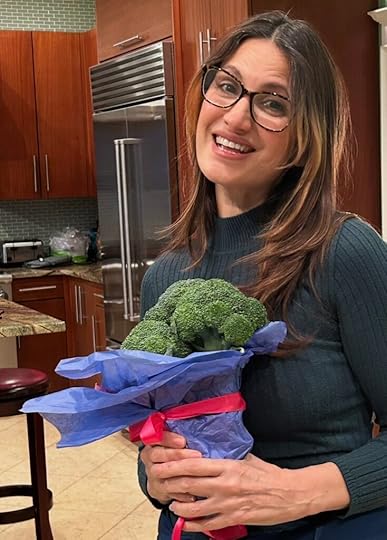 A bouquet of broccoli for Irene’s cancer healing journey | Courtesy
A bouquet of broccoli for Irene’s cancer healing journey | CourtesyA week later, I saw her again. She recommended we push for surgery. My Doubting Thomas surgeon, skeptical as ever, scoped me again and looked stunned. “It’s 2.8 cm. It did shrink.” He showed me before-and-after footage, then said, “You look good.” Thanks?
I got the green light for surgery, absent a stoma. SUCCESS. A month later, the surgery was done. I’M CANCER FREE.
I’m grateful—for friends who became foxhole bitches, for Alicia who uses her platform, for my surgeon admitting chemo’s days are numbered. Immunotherapy is the future, though Big Pharma will find ways to patent and monetize it. I even looked into holistic cancer resorts. $150k a year. Rancid.
The only thing you need is will…I’m not pushing my methods on anyone—I’m just sharing my road trip. For me, cancer was a blessing too. It forced me inward. It was terrifying, yes, but also empowering.
My friend Carmen summed it up: “2025—a year you won’t forget, not because of anything that went wrong, but everything you did right.”
Feckless C., you ain’t got nothing on me, SWEETIE! And speaking of Sweetie—my comedy special (directed by Onur Tukel, presented by Rachel Dratch) is streaming on Amazon Prime. Hard to believe I had cancer while filming it.
To all my C’s out there: you are not alone. Seek and be sought. This fight is ubiquitous. Thanks for listening—impossible not to take the scenic route when cramming a memoir into one essay.
For more on her cancer journey and comedy, follow Irene Bremis on Instagram.
September 16, 2025
The Eco Clothes Bear and I Actually Wear All the Time
Lately, I’ve been thinking about how often we reach for the same clothes over and over. Not because we have to, but because they just work. They feel good, they fit right, they wash well, and they’re made by people and companies I trust.
For us, that’s mostly Mate the Label and Pact.
Bear’s 14 now, which means he’s got a growing opinion about what he’ll wear (and what he definitely won’t). But these days, he’s practically living in his Pact long-sleeved shirts and pants. They’re soft enough that he doesn’t complain, but still look put-together. They’re perfect for school days, family dinners, and everything in between. I’ll post a few photos — he’s so cute in them, and I love how easy it is to layer when the weather’s being moody (which it always is in LA).
His favorite pair of pants from Pact has that magic combination of comfort and structure — kind of like grown-up sweats but nicer. And I have to admit, I love seeing him in his Pact sweater. It’s simple and classic, and makes him look like such a gentleman. We brought it on our last trip and he wore it to dinner more than once without any nudging from me.
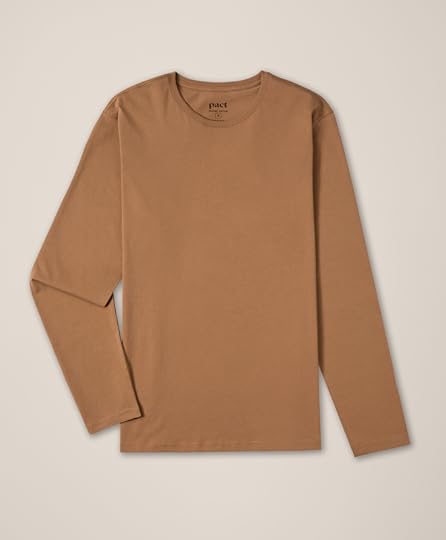 Pact long sleeve shirt
Pact long sleeve shirtI’ve been wearing Pact for years myself; their sweatpants, socks, underwear, and scoop neck tees are all part of my regular rotation. What I appreciate most is that nothing feels fussy. It’s all made from organic cotton, no weird dyes or chemicals, and it feels like something I don’t want to take off at the end of the day.
Mate the Label is another one I go back to all the time. Their pieces have this beautiful simplicity — super soft, well-made, and thoughtfully designed. I love that they manufacture everything locally in LA and that the whole line is non-toxic and climate-neutral. I’ve worn their thermals, sweats, and lightweight basics for years. My favorite right now is the Fleece Relaxed Sweatshirt. It’s cozy enough for mornings at home but cute enough to wear out if we’re grabbing lunch or running to the farmers market.
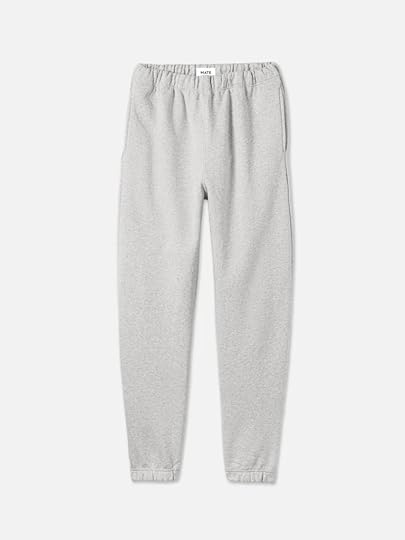 Mate the Label sweatpants
Mate the Label sweatpantsI try to be mindful of what comes into our home, especially with clothes. It doesn’t have to be a lot. In fact, I think it’s better when it’s not. A few high-quality things that you love and wear often — that’s the goal, right? And when those things are also made kindly, it just feels right.
So, here are a few of the staples we’ve come to rely on:
Bear’s Pact long-sleeve shirts and cotton pantsThat classic Pact sweatshirt I love him inEveryday socks and boxer briefs from Pact (Bear-approved)My go-to Pact sweatpants and scoop neck teesMate the Label thermals, sweats, and softest sweatshirtsI’m always looking for brands that are gentle on our skin, on the planet, and on the people making them — and I feel really good about these. Not perfect, but thoughtful. That matters.
More soon,
Alicia x
September 4, 2025
Is ‘Regenerative Wool’ Really Sustainable? A Closer Look at RWS Claims
Lately, you may have seen a few fashion brands talking about wool like it’s suddenly the most sustainable material on the planet. Maybe you’ve seen brands boasting “regenerative,” “responsible,” or “ethical” wool.
Reformation, a brand many consider conscious and cool, now promotes its use of Responsible Wool Standard (RWS)–certified wool as a sustainable choice. Another Tomorrow, Eileen Fisher, and even Stella McCartney all boast regenerative wool in their collections. But when we look beneath the marketing, the picture becomes far less comforting than those cozy-looking sweaters.
Wool comes from animals. And no certification can undo the systemic issues at the core of how it’s produced.
What does ‘regenerative’ really mean?In its truest form, regenerative agriculture refers to a system of farming that goes beyond sustainability. It doesn’t just minimize harm, it actively works to restore ecosystems. Regenerative farming practices can include rotating crops to build soil fertility, using cover crops to reduce erosion, planting trees to increase biodiversity, and eliminating synthetic inputs like pesticides and fertilizers. When done right, regenerative agriculture can increase carbon sequestration, improve water cycles, and support the long-term health of the land.
This approach is deeply rooted in Indigenous land stewardship principles, where farming and grazing were done in harmony with the rhythms of nature, not for extraction, but for regeneration. More recently, regenerative practices have been popularized in environmental circles as a climate solution, especially for soil restoration and carbon drawdown.
But the term has no legal definition, and that’s where things get messy.
In the context of wool, “regenerative” is increasingly being used as a marketing term to suggest that animal-based systems can contribute to climate healing. Wool producers might claim their grazing methods improve soil carbon or reduce erosion, but these benefits are often based on small, cherry-picked studies or theoretical projections, not real-world data at scale. Some regenerative grazing advocates say rotational grazing can mimic natural herd migration patterns, but the science on whether this truly builds soil carbon is still hotly debated and often overstated.
Even more concerning, regenerative wool claims tend to completely ignore the animals themselves. The narrative centers on land health, but says little about whether the sheep involved are treated with care, or if they endure the same violence and commodification seen across the broader wool industry. So when a brand markets “regenerative wool,” it’s important to ask: regenerative for whom?
True regeneration requires care for all parts of the ecosystem, not just soil health, but also biodiversity, climate impact, and animal welfare. A label that focuses only on land, while overlooking what happens to the animals, isn’t fully honest about the cost of production.
What Is the Responsible Wool Standard?The Responsible Wool Standard is managed by Textile Exchange and claims to certify wool from farms that prioritize animal welfare and land stewardship. It cites the “Five Freedoms” of animal welfare and claims to ensure responsible shearing and land management practices. But here’s the problem: the standard makes promises it can’t reliably keep.
Undercover investigations have found cruelty at more than 150 wool operations across seven countries and four continents—many of them certified by RWS or similar programs. Workers have been documented punching, kicking, and stomping on sheep during shearing, while others were caught cutting into animals and stitching gaping wounds without any pain relief. These aren’t isolated incidents. They are patterns that happen across continents, brands, and certifications, according to PETA (People for the Ethical Treatment of Animals).
Even so-called “ethical” programs, like New Zealand’s ZQ Merino, often used alongside RWS, have come under fire. Recent footage revealed sheep beaten and bloodied at ZQ farms. Last year, New Zealand’s Ministry for Primary Industries launched formal investigations into more than 30 farms implicated in these reports, and at least two have been suspended from the ZQ program.
Are the audits enough?Audits under the RWS are mostly pre-scheduled. Even unannounced visits come with up to an hour’s warning, giving farms time to clean up or hide cruelty before auditors arrive. Each certified farm receives just one audit per year, which critics say is hardly enough to capture the day-to-day reality of animal treatment.
The standard also lacks concrete protections around how shearing is done. Shearers are usually paid per fleece, not by the hour, which encourages speed over care. Injuries are so routine that the RWS Farmer Guidebook includes a template for recording them, noting wounds over ten centimeters, accidental removal of teats or parts of the vulva, and other disturbing outcomes.
There are also no requirements for video monitoring, improved restraint methods, or training that prioritizes animal comfort over profit.
What about slaughter?This is another area where the RWS falls short. The standard does not address what happens to sheep once they’re no longer useful for producing wool. Often, they’re transported to the same slaughterhouses as animals from conventional farms, enduring long trips and painful deaths. Investigators have documented animals having their throats slit while still conscious and being handled roughly by untrained workers.
There’s no requirement within the RWS to ensure humane end-of-life protocols, meaning that for all the talk of sustainability and responsibility, the final chapter of a sheep’s life may still be full of fear and suffering.
Why this mattersWords like “regenerative” and “responsible” sound hopeful. And regenerative agriculture can be a powerful tool in the climate conversation when applied to plant-based systems that build soil health and restore ecosystems without harm to animals.
But when we attach these terms to wool, it becomes a form of greenwashing. Wool is still an animal product. It still involves sentient beings who don’t volunteer to be part of the system. And the idea that we can make that system “kind” by branding it differently doesn’t hold up to scrutiny.
In fact, many brands know that shoppers are looking for sustainability, and they’re using that desire to sell business as usual. The goal should be true transparency, not clever marketing.
Better alternatives existThe good news is that innovation is on our side. Today, you can find beautiful, cozy, breathable materials made from plants and recycled content, like tencel, hemp, bamboo, organic cotton, and others that don’t require suffering or slaughter. These materials support biodiversity, protect animals, and often have a much lower environmental footprint.
Fashion can be a space of joy, creativity, and care. But in order to get there, we have to question the stories we’re being sold.
August 11, 2025
4 Foods to Avoid If You’re Pregnant or Trying
You’ll get a lot of advice when you’re expecting: what to eat. But what about the foods to avoid? For moms-to-be, there are some definite no-nos. Let’s take a look.
Most women think of pregnancy as a total departure from normal life, like it’s some kind of nine-month-long excuse to wear fat pants. But all those pints of ice cream and pepperoni pizzas will probably come with a side of hemorrhoids, varicose veins, swollen feet, diabetes, and high blood pressure. Not to mention the impact on your baby.
That’s because filling your diet with nasty foods is the quickest way to derail balance in your body. If your system is busy doing damage control after mealtimes, then it’ll be too short-staffed to get to the really important stuff like making a cleaner, safer, healthier place for your baby to live.
Meat, dairy, and processed foods are tracking toxic sludge through your baby’s house. They’re clogging your arteries, raising your blood pressure, and pumping you full of cholesterol, toxins, hormones, and antibiotics that you don’t need.
Nasty Food #1: MeatUnlike true carnivores (think big jungle cats with big, pointy teeth), whose short intestinal tracts allow for much faster digestion, when humans eat meat, it gets to spend time on the 98.6-degree-Fahrenheit lazy river of our insides—up to 72 hours, to be exact. And what’s it doing in those 72 hours? It’s rotting. That’s three days that a decomposing piece of flesh is sharing a bunk bed with your baby! Yes, it’s being dealt with by your digestive system, but while that meat is taking days and days to break down, it’s leaching a noxious cocktail of hormones, antibiotics, pesticides, pollutants, bacteria, and viruses into your body.
Fish isn’t much better. The tons of garbage floating in the oceans slowly break down into snack-size particles for little plankton-eating fish. And when those little fish become dinner for the big fish—which we in turn eat—they’re passing on not only mercury but also organochlorines, polychlorinated biphenyls (PCBs), and other environmental toxins that are known to be major offenders in fertility, increasing the risk of endometriosis and altering hormonal function.
Yes, omega-3 fatty acids (found in some fish) are good at lowering the risk of heart disease, improving blood vessel function, and improving the overall health of people with diabetes, but we can also get these health benefits from omega-3-rich sources like walnuts, chia, hemp, and flaxseeds, without any of the fishy stuff.
Nasty Food #2: DairyDairy, like meat, is full of unwanted surprises. With the approval of the FDA and USDA, many farmers use growth hormones to rev up milk production and antibiotics to treat the frequent infections cows get from being tethered to milking machines three times a day with no fresh air, and feed them livestock grains that are doused with any number of purposely life-killing compounds.
I know milk seems like a healthy staple of our diet—I mean, most of us grew up drinking a glass with dinner. But the truth is, most humans never tasted any milk besides breast milk for almost all of human history. Cow’s milk is a fairly recent addition to a majority of our diets, thanks to industrialized agriculture. Besides, no other mammal quenches its thirst for the milk of another species.
Nasty Food #3: SugarSugar is bad for the baby house and bad for you. It causes inflammation, can lead to diabetes, and is linked to cancer. But let’s think about the most obvious point of all: Sugar makes you feel like garbage.
If you’re caught in the sugar-craving hamster wheel, consider this: Refined sugar is really bad for the baby house. The Nurses’ Health Study found that eating too many simple carbohydrates can lower your chance of getting pregnant. And if you do manage to get pregnant, continuing to consume large amounts of refined sugar puts you at an increased risk for high blood pressure, which can endanger the baby.
Plants are not without their unprocessed sweet rewards, and after you give your poor taste buds a break from the white sugar assault, you won’t believe how utterly satisfying something as simple as a bowl of ripe berries can be.
Nasty Food #4: Processed FoodBelieve me, I know the allure of a quick-and-easy meal or snack snapped off the grocery store shelf. But food that comes in a box or bag, that has a mile-long list of ingredients, and that can sit unrefrigerated for days is not the “kind food” we’re talking about.
Yes, there might be whole grains or even kale listed on the side of the box. But chances are, during its factory-processed life, those good bits were souped up with hidden sugars and fats and a scary mix of preservatives and additives linked to numerous health issues like obesity, heart disease, and can be seriously detrimental to the health of your developing baby.
If you’ve gotten to the end of this article and are freaking out about a lifetime spent eating these foods take a deep breath. Deliciousness and health await you—trust me!! The human body is incredibly resilient. It wants to heal and be healthy! By beginning to make cleaner, kinder choices now, you can give your body the opportunity to be the amazing little machine it was meant to be.
Check out The Kind Mama for more information & seriously delicious recipes.
July 28, 2025
These Foods Fight Migraines
Migraine headaches affect 25 percent of the female population and about eight percent of the male population. Most people who suffer from migraines head straight for the medicine cabinet, but there are foods that can help reduce the frequency and severity of migraine headaches.
I used to get severe migraines as a kid. The pain was so unbearable! I have memories of praying so intensely for it to stop because it would hurt so bad. Thankfully, I have not had one since I changed my diet to a kind one.
Migraines are a type of headache characterized by intense, debilitating pain. They can last for hours or even days, and can significantly interfere with a person’s daily activities. Migraines are often accompanied by other symptoms beyond just headache, which can include:
Aura: These are sensory disturbances that often precede the headache. They can include visual changes such as seeing flashes of light, zigzagging lines, blind spots, or other symptoms like tingling on one side of the face or in an arm or leg.Nausea and vomiting: Many people with migraines experience these symptoms during an attack.Extreme sensitivity to light and sound: During a migraine, people often find that light and noise make their headaches worse.Lightheadedness, sometimes followed by fainting: These are less common symptoms but can occur in some people.Migraines are often divided into two main types: migraine without aura and migraine with aura. Some people will always experience an aura before a migraine headache, while others will never experience an aura.
The exact cause of migraines isn’t completely understood, but they seem to involve changes in the brain and genetic factors. Certain triggers can also increase the risk of having a migraine. These can include stress, certain foods and drinks, lack of sleep, and hormonal changes in women.
Treatment for migraines can include a combination of medications, lifestyle changes (such as identifying and avoiding triggers), and sometimes complementary therapies like acupuncture.
Which foods cause migraines?Since migraines aren’t fully understood, their triggers aren’t either. But there are a handful of foods connected to migraines including caffeine, alcohol, cheeses and processed meats, as well as food additives including aspartame and other artificial sweeteners, and MSG (Monosodium glutamate), a flavor enhancer used in many types of food.
Foods that fight migrainesIf you follow a kind diet but still get migraines, I recommend you see a macrobiotic counselor. For now, here are five foods that have been shown to help fight migraines.
1. MilletMillet contains migraine-preventing magnesium. Try it for breakfast in my millet and sweet vegetable porridge.
The research is still in its infancy ,but flaxseed is high in omega-3s, and some studies have shown that omega-3s can reduce the frequency of migraines
At least one study concluded that olive oil (also high in omega-3s) reduced the length, intensity, and duration of migraine attacks in adolescents.
Vitamin B2 (riboflavin) is a major weapon in the battle against migraines. Spinach has some of the highest amounts of riboflavin among other vegetables. But a word of caution: be mindful of eating spinach more than 1-2 times a week. This is because it contains low levels of oxalic acid, a naturally occurring acid that can interfere with calcium absorption. There are many other riboflavin-rich veggies such as asparagus, broccoli, and peas that can be substituted.
5. WaterDehydration is a common trigger for migraines, so before you reach into the medicine cabinet, or start chowing down, make sure you’ve had your H2O.
Other foods believed to fight migraine headaches are peppermint, cayenne pepper, ginger, wheat germ, soy, and many dark leafy vegetables.
July 25, 2025
Bad Manners: Sweet Potato, Squash, & Black Bean Enchiladas
Bad Manners: Eat Like You Give a F*ck is a tough, edgy, and fun-looking cookbook all about eating plant-based. The authors lay down the facts, provide the steps, and want you to “elevate your kitchen game.” These guys make me giggle. I’m not the biggest fan of enchiladas but I definitely want to try these! Enjoy!
There are two kinds of people in this world: people who like enchiladas and people who have no fucking taste. Which are you?
MAKES 8 ENCHILADAS OR ENOUGH FOR 4 PEOPLE
ENCHILADA SAUCE
21/4 cups vegetable broth
1/3 cup tomato paste
21/2 tablespoons chili powder
2 teaspoons ground cumin
11/2 teaspoons dried oregano
2 to 3 cloves garlic, minced
2 teaspoons soy sauce or tamari
1 tablespoon lime juice
FILLING
1 large sweet potato (about 1 pound), chopped into nickel-size pieces*
2 teaspoons olive oil
1/2 yellow onion, chopped
1 medium yellow squash, grated on your box grater (about 1 cup)
1 teaspoon chili powder
2 cloves garlic, minced
11/2 cups cooked black beans**
1 teaspoon maple syrup or agave syrup
A pack of corn or flour tortillas
Sliced avocado
Chopped fresh cilantro
1/2 teaspoon ground cumin
1/2 teaspoon salt
(keep going ’cause you know we aren’t done . . . )
* You really just need 1 large cooked sweet potato. If you have a leftover roasted sweet potato or something, just scoop out the flesh and move on with the recipe. Or steam it in the microwave if that is your shit: Stab it with a fork, then cook on high for 5 minutes, flip, then 5 minutes more.
** Or one 15-ounce can
July 1, 2025
The Best Clean, Vegan Sunscreens for Your Body and Your Planet
The weather in LA is heating up and we are slowly getting into summer mode over here. Bear and I love to spend time outside, hike with our dogs, and swim. Sometimes we surf! For times when sunscreen is needed (skin covered in sunscreen does not absorb vitamin D the same as un-blocked skin), these are my favorite sustainable and vegan sunscreens to use
Like most conventional products, sunscreen can contain lots of icky ingredients. In order to steer clear of that stuff, look for a few key indicators on your sunscreen to help you navigate. Ideally, the ingredients are natural or organic, and mineral-based (like zinc oxide) with limited other (hard to pronounce) ingredients. Bonus: look for products that also tout being reef safe. Ingredients gentler on the planet are generally gentler for our bodies, too.
If you want to dig deeper into certain brands or educate yourself more on those unknown ingredients, check out the Environmental Working Group‘s simple to use and informative sunscreen guide.
Though there are a fair amount of natural-based sunscreens out there, continue to read labels and question ingredients—as even if they lack some of the more common scary ingredients, there could be some other questionable ones in there.
Here’s one: Ethylhexylglycerin is a relatively new chemical on the market and is commonly used as an alternative to parabens. While it does derive from vegetable oil, it goes through several chemical processes. It’s definitely not the worst ingredient out there, but there just isn’t too much research on it so just be aware.
Similarly, Polyaminopropyl Biguanide is a synthetic ingredient commonly found in natural sunscreens. It is also not a terribly dangerous ingredient, but the way it works is by breaking the cell wall of bacteria and damaging its DNA. Studies have shown it’s not strong enough to break down human cells, so that’s a relief! But it is restricted in Japan so if you want to lean on the safe side, steer clear of it.
Best Sunscreen For Daily ProtectionListed below are some healthy sunscreens— some I like to use and others with excellent safety ratings. So get your best summer on without burning, premature aging, or damaging coral reefs. Enjoy!
 For the Face1. Josh Rosebrook Nutrient Day Cream Tinted, SPF 30
For the Face1. Josh Rosebrook Nutrient Day Cream Tinted, SPF 30I love this tinted SPF! It has zinc, so it protects against UVA and UVB rays, blended with yummy organic ingredients like almond oil, calendula, and shea butter.
Get it here 2. Body Deli Solar Day Cream
2. Body Deli Solar Day Cream I love the Body Deli products and this sunscreen does not disappoint, either. This is great for the face. Nice neutral scent, and feels really lightweight.
Get it here 3. Alba Botanica, SPF 30
3. Alba Botanica, SPF 30 Goes on like a charm, feels nice! The coconut shea butter one smells really good!
Get it here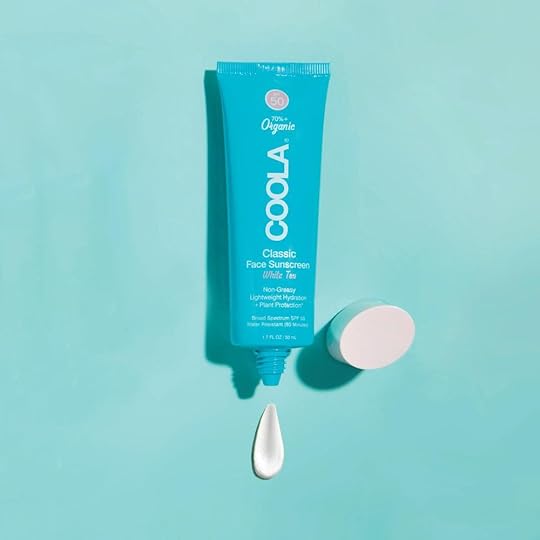 4. Coola, SPF 50
4. Coola, SPF 50 I love Coola’s sunscreen. There are a few different flavors but the gentle white tea scent is my pick. It’s reef safe and doesn’t leave a white tint. I mostly use this on my face but it feels nice on my arms and body and isn’t sticky either. I also love the Coola Guava Mango SPF 50 Sport organic sunscreen spray. It’s one of my favorites and smells incredible.
Get it here 5. Raw Elements Baby and Kids Stick, SPF 30
5. Raw Elements Baby and Kids Stick, SPF 30Great! I love the idea of a stick- especially with a kid, it makes it super easy to apply on the face quickly and then let them run back into the sun!
Get it here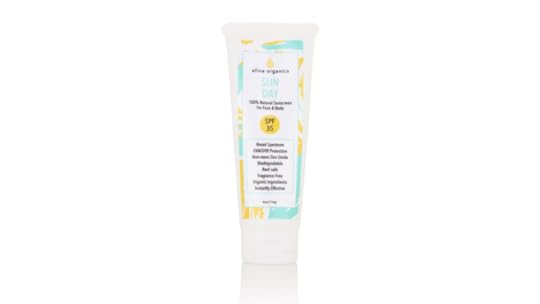 6. Elina Organics Sun Day, SPF 35
6. Elina Organics Sun Day, SPF 35Super white and thick- I had to rub this one in a lot! It is heavy on the white tint but it does go in nicely.
Get it hereFor the Beach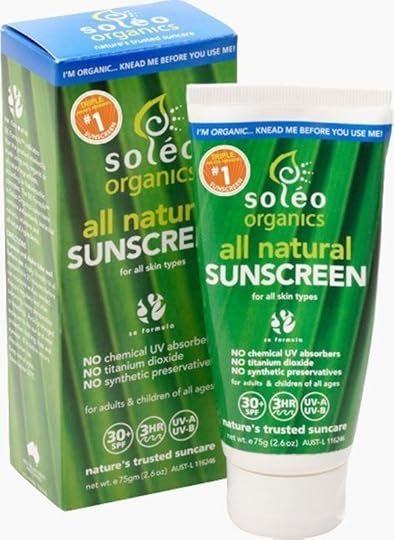 7. Soleo Organics, SPF 30
7. Soleo Organics, SPF 30This sunscreen rubs in rather easily and is great when you’re at the pool or beach as it has a three-hour water resistance window!
Get it here 8. MyChelle Replenishing Solar Defense, SPF 30
8. MyChelle Replenishing Solar Defense, SPF 30Smells great, lightweight, no white cast….but slightly sticky! Doesn’t feel overly sticky that I wouldn’t use it, though!
Get it hereKids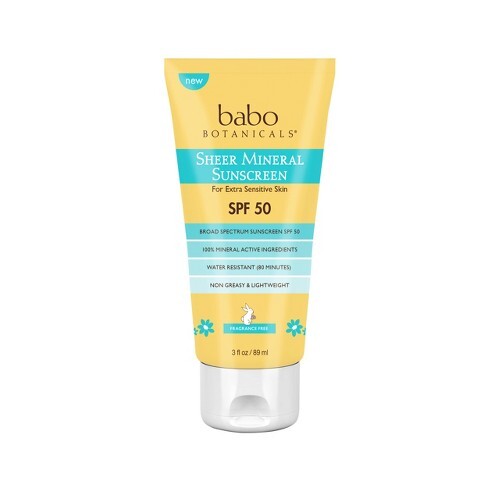 9. Babo, SPF 50
9. Babo, SPF 50Great for Bear — this one is very kid-friendly. It does give you a slight white tint, and it isn’t super easy to rub on, but it is great for the shoulders and chest and I feel like it’s one of the best for keeping littles protected.
Get it here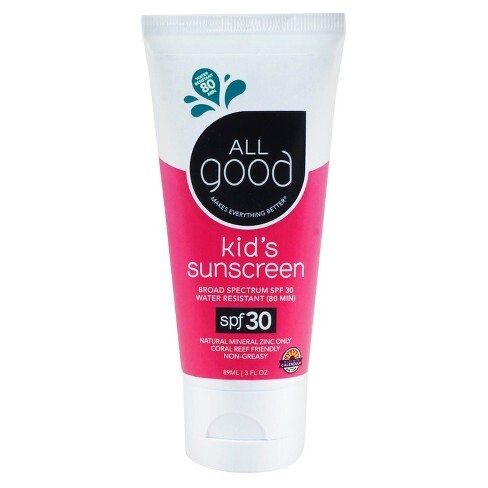 10. All Good Kids Sunscreen, SPF 30
10. All Good Kids Sunscreen, SPF 30This one didn’t really pass the test! Extremely white on the face and body- and sticky once it’s on!
Get it hereMay 22, 2025
Yummy, Vegan Summer Barbecue Recipes: From Sides to Sweets
With warm weather comes all the cookouts and barbecues and you don’t need meat in order for it to be a delicious feast! These recipes are plant-powered and perfect for your grill or cookout.
Enjoy!
Appetizers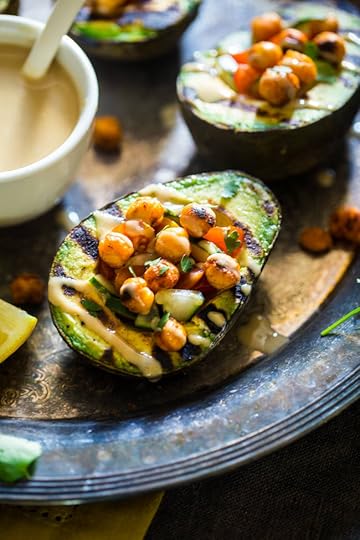
Grilled Stuffed Avocados with Chickpeas
Simple Healthy Coleslaw
Grilled Sweet Potatoes with Mint, Chili, and Smoked Garlic
Summer Potato Salad
Fresh Tomato + Avocado Tart with Pine Nut Crust
Roasted Cabbage Wedges with Onion Dijon Sauce
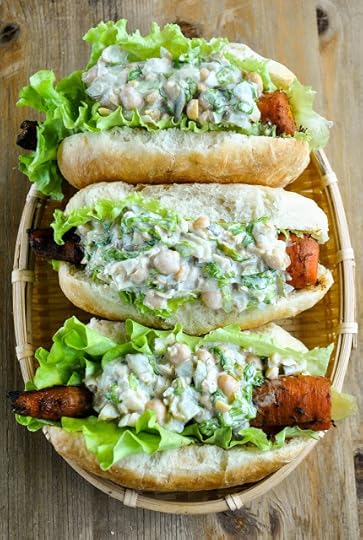
Perfect Grilled Portobellos
Smoky Barbecue Carrot Dogs with Creamy Chickpea Salad
BBQ Black Eyed Pea Collard Rolls

Ice Cream Bars
Strawberry Nectarine Crisp
Pistachio Ice Cream
Looking for meaty burgers? Check out some favorites, here.
May 20, 2025
My Favorite Brands for Cute, Comfy Vegan Sneakers
I am really excited about all of these vegan sneakers! Whether hitting the trails, the beach, or just looking cute, finding the best pair of summer sneakers is a must. These companies are also all doing things in a responsible manner while being cute and chic at the same time. How great is that? I’ve found a few really incredible sustainable and vegan brands I’d love to share with you.
The best vegan sneakersWhether you’re hitting the trails, the farmers market, or the summer festivals — a good pair of sneakers is essential. And even better when they’re all vegan and sustainable!
 Veja
VejaI love my Veja sneakers with jeans, dresses, and leggings. The company offers a few vegan options and has cute kiddo styles, too. I have a white pair and find that I’m wearing them in the spring and fall the most. They are made of faux leather, or canvas. Mine are faux leather with a rubber sole.
Looks like mine are sold out but shop a similar pair on the site.

Nike
Like a number of mainstream brands, Nike is now doing sustainable shoes. This style is called the Space Hippie—and it keeps selling out. (I can’t even get my hands on them!) It’s the lowest carbon footprint shoe that Nike has made. The shoe features 25% recycled materials, and 75% recycled upper, made from recycled plastic bottles and t-shirt scraps. Keep it up, Nike!
Get them here Lane Eight
Lane EightI like my grey sneakers from Lane Eight. I wear them hiking and for working out. They are made with vegan microfiber, recycled polyester threads, and each shoe is made from 11 recycled plastic bottles! The insole is made from algae that give back 31.5 liters of water back to the oceans, and reduces 64 cubic meters of carbon from the atmosphere.
Shop my comfy grey ones:
 Cariuma
CariumaThis brand is not entirely vegan, but has a few really nice vegan options and has sustainability practices: responsibly sourced materials, fair wages, and givebacks to charitable organizations. I like the white canvas lace-ups with jeans and dresses to style them down.
Get them here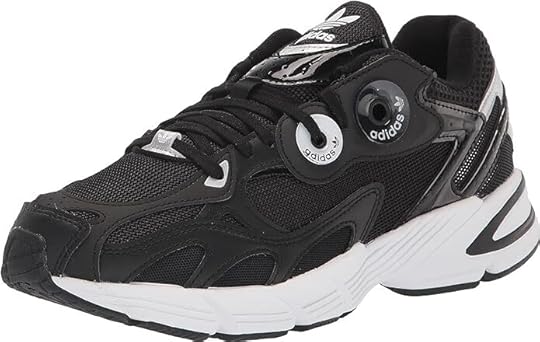 Adidas
AdidasThese lightweight shoes are made partly from recycled materials including deadstock and post-consumer waste. Adidas isn’t entirely vegan but like Nike it has put a focus on sustainable materials and reducing its carbon footprint.
Get them here Alohas
AlohasAlohas’ TB.65 sustainable sneakers are crafted in Spain from eco-friendly apple leather and detailed with subtle gold lettering on the side and raised leather patch at the heel counter. The thick rubber soles make these a great walking shoe, too. (I love Alohas boots, too!)
Get them here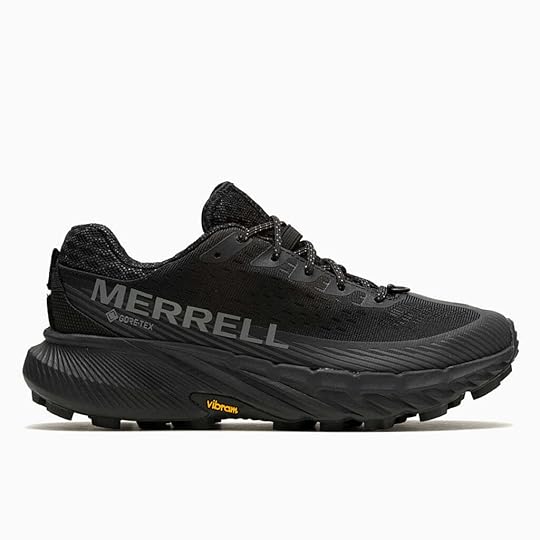 Merrell
MerrellMerrell is known for its outdoor gear and these waterproof and comfy shoes are perfect for outdoor activity with a high-performance outsole. The shoes feature recycled laces and webbing and there’s recycled foam in the footbed, too.
Get them hereHappy Shopping!
Xo,
Alicia
May 11, 2025
Apple Pie Pancakes
This recipe comes from Isa Chandra of Post Punk Kitchen. I haven’t tried them, but they look like a nice treat for brunch!
Try my Traditional English Breakfast!
Apple Pie Pancakes
Ingredients
For Apple Topping:
For Pancakes:
1 cup plain almond milk (or preferred non-dairy milk)2 teaspoons apple cider vinegar2 tablespoons ground flax seeds (sold as flax meal)1 1/4 cups whole wheat pastry flour (or all-purpose flour, but not regular whole wheat flour)2 tsp baking powder1 teaspoon ground cinnamon3/4 teaspoon ground ginger1/4 teaspoon ground nutmeg pinch ground allspice pinch ground cloves1/2 tsp salt2 tablespoons apple sauce2/3 cup apple juice1 tsp vanilla extract1 tablespoon pure maple syrup
Instructions
Prepare the topping: Toss all topping ingredients in a medium (4 quart) pot, sprinkle on the cinnamon. Mix it up so that the corn starch dissolves. Use an angled wooden spoon to do the mixing since it reaches the bottom corners of the pot.
Cover pot and bring to a boil, keeping a close eye. Once boiling, lower heat to a simmer and cook for 20 more minutes, stirring occasionally. Once apples are nice and tender, smash a few of them to thicken sauce. Remove from heat and keep covered until ready to serve.
Prepare the pancakes: Pour almond milk into a measuring cup. Mix in apple cider vinegar and ground flax seeds with a fork. Set aside; mixture will thicken.
Meanwhile, in a large mixing bowl, sift together flours, baking powder, spices and salt. Create a well in the center and add the milk mixture and the apple sauce, apple juice, vanilla and maple syrup. Use a fork to mix until relatively smooth, a few lumps are okay. Let the batter rest, and preheat a large, non-stick or cast iron pan over medium heat.
When pan is hot, spray with a thin layer of cooking spray and use an ice cream scooper or scant 1/4 cup measure to pour batter and form pancakes. If you can fit three at a time that’d be great. The pancake should start to form little air bubbles, but not as much as pancakes with oil do, so don’t worry if they don’t bubble too much. Cook until the edges are dry and the tops of the pancakes are only slightly wet, about 2 1/2 to 3 minutes, then flip and cook for 2 minutes more. Keep warm on a plate covered with tin foil until all pancakes are ready to serve.
Serve hot with apple topping.
What’s your favorite brunch dish? Share your recipes on your profiles and I’ll feature them in the kind recipe gallery.
Photo: The PPK
Alicia Silverstone's Blog
- Alicia Silverstone's profile
- 85 followers



